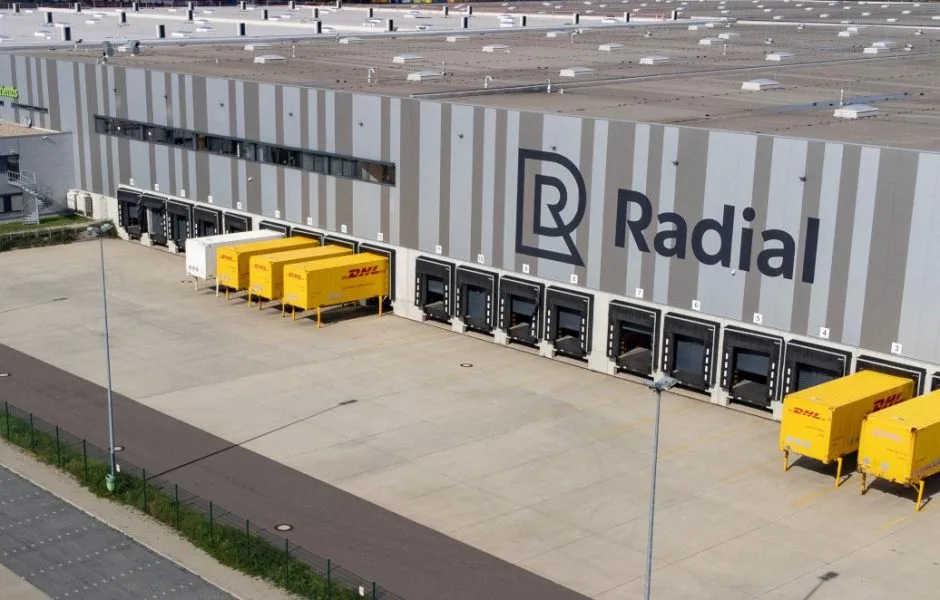Getting Started in Cross-Border E-commerce
Expanding into cross-border e-commerce opens the door to new markets, increased brand visibility, and fresh revenue streams. Once limited to major brands, global selling is now within reach for businesses of any size thanks to improved logistics and streamlined costs. Before making the leap, it’s important to understand what it takes to succeed internationally.
Expanding into cross-border e-commerce means reaching new markets that allow you to grow your business overseas. Global e-commerce was once only practical for major brands, but with improved logistics and cost-containing strategies, it’s now an accessible option for any business that wants to grow.
In 2022, cross-border e-commerce was projected to account for 22% of e-commerce shipments, amounting to $3.5 trillion. With new markets to reach, are you ready to expand into cross-border e-commerce? Keep reading to learn more about strategies and challenges.

What is cross-border e-commerce?
Cross-border e-commerce is when online retailers sell goods to customers in different countries other than their own. Today, we see this abound with marketplace sellers on Etsy, Amazon, Google Shopping, and eBay. Mega retailers and solo entrepreneurs can compete globally in cross-border e-commerce.
If you’re looking at expanding your business or wanting to move into new markets, selling in other countries can be a great way to improve your brand awareness, open new revenue streams, and reach a new customer base before your competitors do.
The benefits of moving into international e-commerce may be just what your business needs. But before you offer international order fulfillment, there are some key things you need to know to succeed.
First, let’s start with the challenges and risks.
Challenges of cross-border e-commerce
You’ll want to consult your accountant and a legal advisor before you begin selling internationally. This is because there are taxes and customs that will impact your business.
Here are some key things to be aware of and to discuss with your advisors when deciding if international e-commerce is right for you and which countries you want to sell in:
- Taxes. Every country has different tax laws and regulations. These will impact your pricing, shipping costs, and more significantly, your own tax reporting.
- Foreign currency exchange and tariffs. Each country or region (like the European Union) has their own currency and some have tariffs. These will impact the price of your goods and ultimately, your profit. Exchange rates fluctuate daily, and you’ll need to be able to track each currency in real-time.
- Unseen costs. There can be unseen costs that impact international selling, such as different payment methods, fees for card processing, and banking fees.
- Fraud. Payment fraud is an ever-present threat in e-commerce no matter where you do business. But when you’re dealing with international orders, payment methods, and customers, you’ll want to make sure your anti-fraud prevention strategies are up to date and capable of protecting you in the event of fraud.
- Cross-border fulfillment. Shipping internationally will cost more if you do not have fulfillment centers located in regions closer to the customer. Working with a global fulfillment partner that has distribution centers in the regions where you want to sell can be an effective solution.
- Shipping. Every country has its own import/export laws, tariffs, and taxes. All of which impact shipping. You’ll want to work with a shipping partner that is adept at international shipping and who will navigate all the various regulations and information on your behalf.
This may all seem daunting; keep in mind that you can work with a third-party logistics company like Radial, that has a global presence and decades of experience in navigating international e-commerce on behalf of retailers.
After you have a solid understanding of the challenges and risks involved and you’ve decided which countries you will be selling in, you’ll need to determine how you want to reach those markets.

Radial Europe’s Halle fulfillment center, strategically located in central Germany, offers an ideal hub for serving customers across Europe and beyond.
Cross-border e-commerce strategies
What is the best way to reach a new customer base in another country? Typically, it’s through localization (which is adapting your e-commerce marketing and brand to meet the needs of the local culture and region) and through regional marketplaces (local equivalents to eBay and Amazon).
- Localization enables you to relate to your new customer base in a way that resonates with them culturally, linguistically, and according to their preferred consumer behavior. Examples would be updating product images and marketing copy to reflect the culture and language of a specific country or region.
- Regional marketplaces give you the opportunity to use a platform that your customer base is already browsing and lets you begin competing immediately. Examples of regional online marketplaces include Alibaba, AliExpress, and Rakuten.
You may find it is best to use both approaches — create a localized version of your e-commerce website or app, and also launch a store on a regional marketplace.
How to deliver great customer experiences to international customers
No matter where your customers are located, they expect a great customer experience. International customers want convenience, competitive pricing, accurate product descriptions, trustworthy reviews and ratings, and fast, reliable, low- to no-cost shipping and return options.
Here’s how to ensure their experience meets their expectations:
- Address the trust issue. Online shopping across borders always creates some doubts about an e-commerce business’s trustworthiness. Make sure to display your badges from credible associations, post honest reviews and ratings, and have a way for customers to reach a human for support.
- Respect the culture. You may not understand why your customers think the way they do or have different values and preferences, but that doesn’t matter. Respect their ways and beliefs, and be mindful of the differences. Pay close attention to how your brand relates to them.
- Offer shipping options that meet their expectations. You may need to get insight on this from major carriers or a third-party logistics partner that provides carrier management services.
- Make it convenient. The burden for adopting new payment methods or social media (the majority of the world uses WhatsApp, for example) should rest on you, not your new customers.
- Be personal. No matter the size of your e-commerce business, providing a human touch can help build trust and connection with your cross-border customers. Make sure they can reach a human for customer support and if possible, include a hand-written note in your packaging.

Partner with an international e-commerce fulfillment provider
Getting started or expanding in international markets can be daunting. One of the best ways to get up-to-speed quickly and make sure you are addressing key matters is to partner with a third-party logistics provider like Radial.

